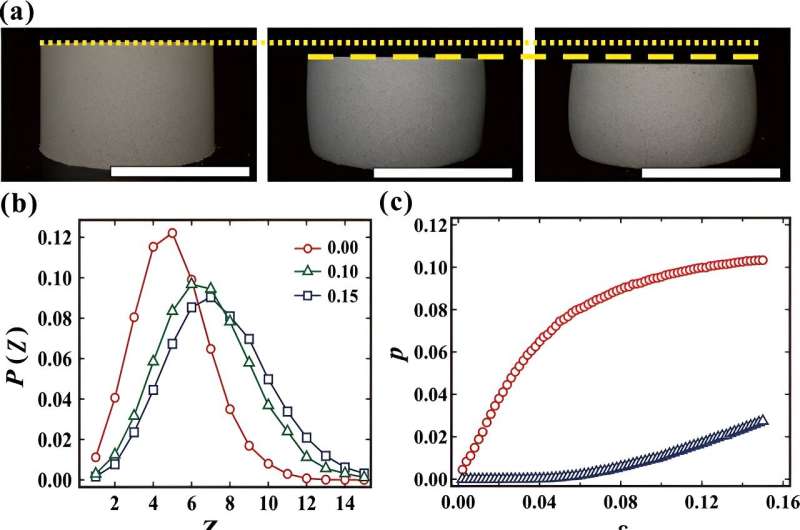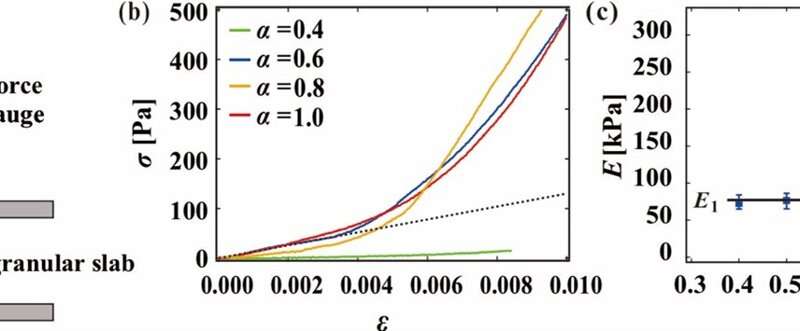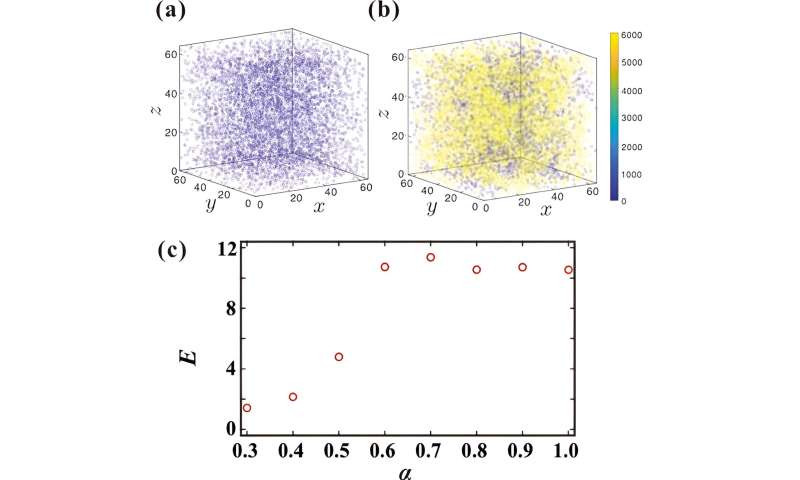This article has been reviewed according to Science X's editorial process and policies. Editors have highlighted the following attributes while ensuring the content's credibility:
fact-checked
peer-reviewed publication
trusted source
proofread
To stick or not to stick? Mixed sand columns illuminate design of better materials

Scientists from Tokyo Metropolitan University have been studying the strength and toughness of sand columns made of a mixture of sticky and non-sticky grains. They have uncovered the mechanism behind how the strength changes as grains are mixed in different ratios, and how a mixture can help keep the column more resilient to deformation. Non-sticky grains are also easily replaceable with other materials, enabling the design of stronger, tougher, functional matter.
Granular matter consists of vast numbers of small grains, like sand and powders. Such grains can be made to stick to each other, yielding strong materials like concrete. But strength isn't everything. Strong materials can be brittle, and easily crack when deformed. Science-driven design of materials that are not only stronger but tougher too continues to be a challenge for material scientists.
A team from Tokyo Metropolitan University led by Professor Rei Kurita has been studying the mechanical properties of sand columns, a simple yet powerful model for granular matter. Instead of focusing on grains that all stick to one another, they have been looking at mixtures of non-sticky normal sand and "kinetic" sand, silicone-oil coated grains which can stick to each other. The research is published in the journal Communications Physics.
While the mechanics of "attractive grains" is relatively well understood, that cannot be said for materials where stickiness only features in a subset of grains.

When they made columns with different proportions of sticky grains, they found that the strength of the column, as characterized by how much they deform when put under a load, shows a characteristic stepped change.
When the proportion of sticky sand reaches 60%, the strength suddenly jumps to a higher value. More sticky sand does not lead to any further increase.
Through computer simulations of a similar setup, they found that this was exactly when sticky grains formed a rigid network that extended through the sample. This needs to be distinguished from sticky grains simply connecting through the sample; lines of sticky grains, for example, can easily deform when the ends are pushed together. It is only when there are enough connections between grains that the sticky grains can support a weight.
-

(a) Schematic of setup used to test the strength of columns. (b) Stress in the column versus the proportion by which it is deformed. Alpha is the proportion of sticky grains. (c) Young's modulus (stiffness) of columns with different proportions of sticky grains. Credit: Tokyo Metropolitan University -

Columns with low (a) or high (b) proportions of sticky grains in a computer simulation. Different colors correspond to different rigid clusters, colored by how large the cluster is. Note how a single cluster spans the whole box in (b). (c) Stiffness of columns with different proportions of sticky grains (alpha) in simulation. Credit: Tokyo Metropolitan University
Unlike typical strong materials however, these partially sticky columns show unique behavior when they are put under larger loads. As the column deforms, the columns don't crack; they instead change their shape: the connections between sticky grains aren't simply being destroyed but are able to rearrange and reform. This makes the columns not only strong, but tough.
The team notes that since more than 60% sticky grains don't change the strength, the other 40% can be easily switched with any other material, for example, something with antibacterial properties. This counter-intuitive design feature paves the way for composite materials which are not only stronger and tougher, but functional too.
More information: Honoka Fujio et al, Gel-like mechanisms of durability and deformability in wet granular systems, Communications Physics (2024). DOI: 10.1038/s42005-023-01518-0
Journal information: Communications Physics
Provided by Tokyo Metropolitan University





















